The people and history of the Torres Strait Islands
- Published
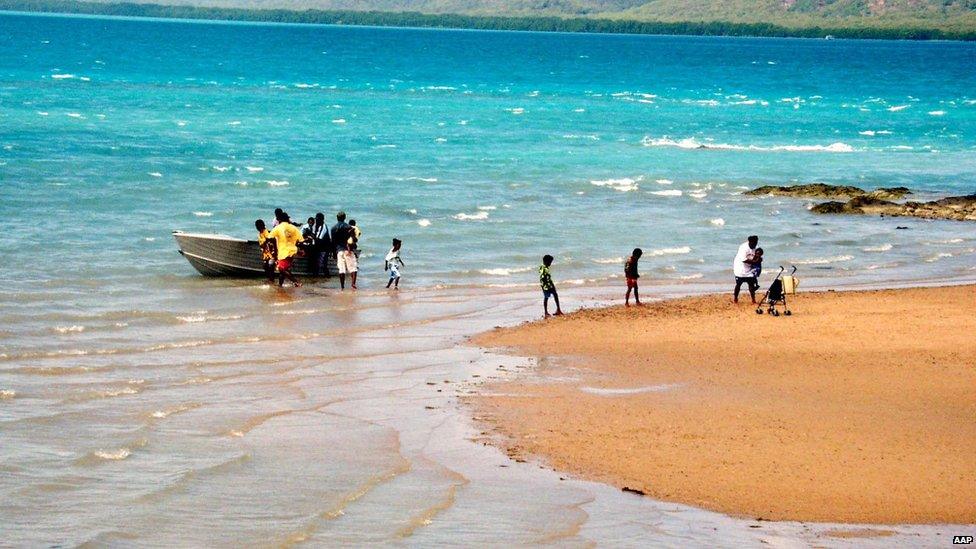
In the Torres Strait, families travel from island to island by small boats
Australian Prime Minister Tony Abbott has this week relocated his government to the most northern part of the country, the Torres Strait Islands.
Before he took power in 2013, Mr Abbott promised that every year he would spend a week in a remote Indigenous community to learn more about the issues and problems facing Aboriginal and Torres Strait Islanders.
Last year, he visited Arnhem Land in the far north of the Northern Territory, where he ran the government from a tent.
For most of this week, Mr Abbott is running the government from a defence facility on Thursday Island, one of the 17 inhabited islands in the strait, before moving to Bamaga in the Cape York region on the mainland.

Where are the islands?
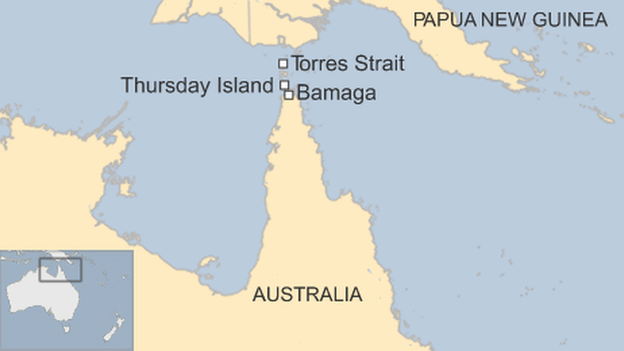
There are an estimated 274 small islands in Torres Strait, which separates Australia's Cape York Peninsula from Papua New Guinea (PNG).
The most northern island is about 4km (2.5 miles) from the PNG mainland and on the north-west, the islands are about 73.5km from Indonesia
The islands and their waters and reefs are home to many rare and unique species such as the endangered dugong and various turtle species, as well as saltwater crocodiles.

Who lives on the islands?
The traditional people of Torres Strait are of Melanesian origin and speak two distinct languages. They are distinct from Aboriginal Australians living on the mainland.

More Torres Strait Islanders live on the mainland than in the Strait
Over the past 25 years, archaeologists working in the Torres Strait have found evidence of human settlement dating back 2,500 years.
There are about 6,800 Torres Strait Islanders who live in the strait and an estimated 42,000 living outside the islands, mostly in north Queensland.

How did the islands become part of Australia?
Torres Strait is named after a Spanish captain, Torres, who sailed through the strait in 1606 on his way to the Philippines.
In the first half of the 19th century, trader ships regularly sailed up Australia's east coast and through the Torres Strait on their way to ports in India and Asia, but few stopped at the islands.
In the 1850s, western traders discovered the seas close to the Great Barrier Reef and Torres Straight were rich in the much-sought after sea animal bêche-de-mer (Sea cucumber).
By the 1870s, there was a rush on pearls in the waters around the islands and before long the Colonial Secretary in Britain decided to annex the profitable territory to the then colony of Queensland.

Who was Eddie Mabo?
For many Australians, the Torres Strait Islands are best known as the birth place of Eddie Koiki Mabo.
Born on the island of Mer, Mabo became famous for his work campaigning for Indigenous land rights and for his role in a landmark decision of the High Court of Australia that overturned the legal doctrine of terra nullius ("land belonging to nobody"), which had characterised Australian law with regard to land and title.
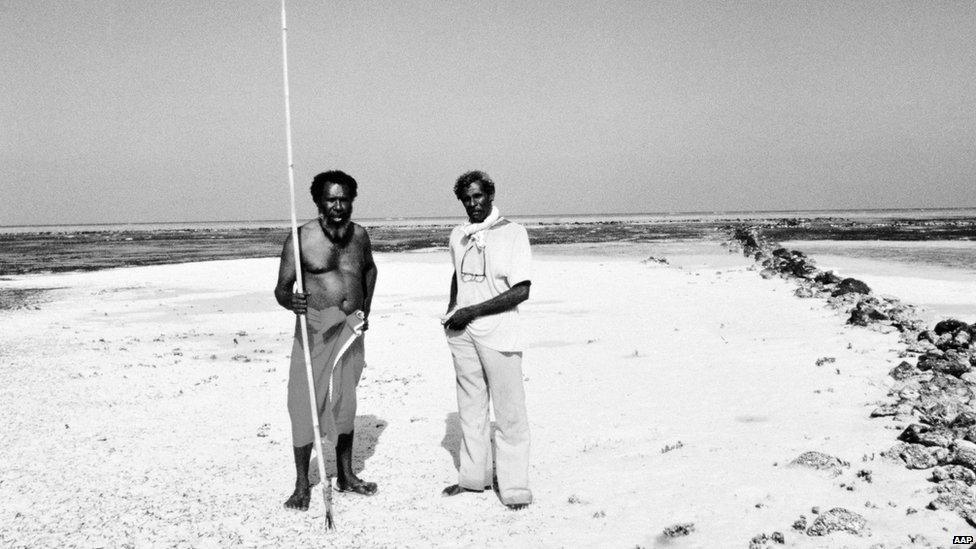
Eddie Mabo (left) didn't live to see the High Court hand down its historic judgement
As a result of that case, the islands were the first place in Australia where Native Title was recognised under Australian law.
Mabo died of cancer in 1992, at the age of 55, five months before the High Court overturned "terra nullius", which eventually led to the creation of various forms of land rights laws for Indigenous Australians.

Do the islands have their own flag?
Like the Aboriginal flag, the Torres Strait Islands flag is recognised as an official "Flag of Australia" under the Flags Act 1953.
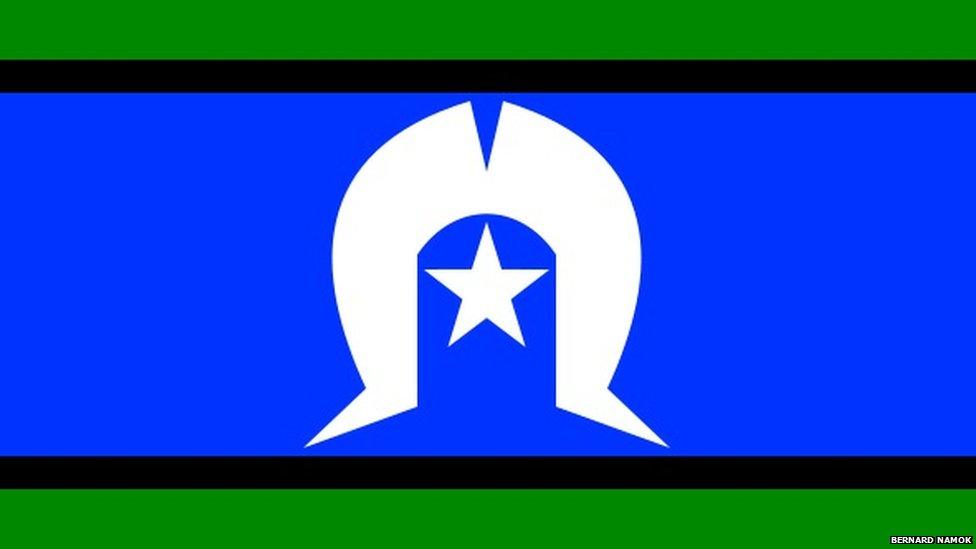
The flag's green, black, and blue stripes represent land, people and sea
Designed by the late Bernard Namok of Thursday Island, the flag symbolises the unity and identity of Torres Strait Islanders.
It is made up of a white Dhari (headdress) and a five-pointed star symbolising peace, the five major island groups and the navigational importance of stars to the seafaring people of the Torres Strait.
- Published15 September 2014
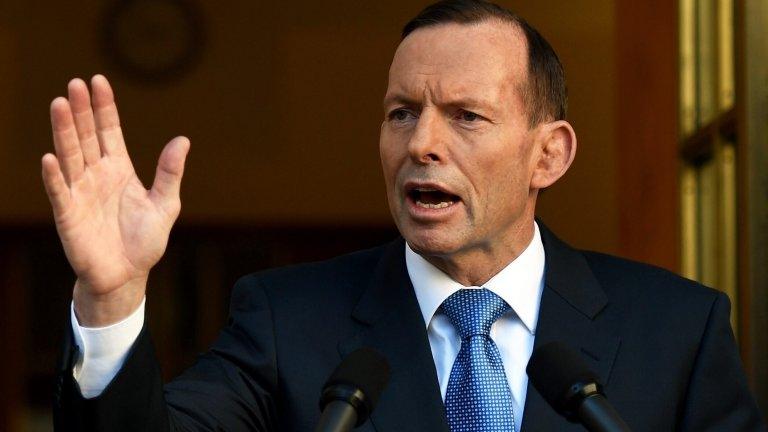
- Published15 September 2014